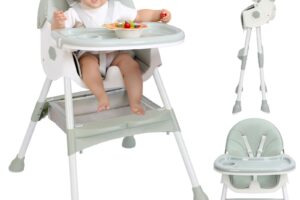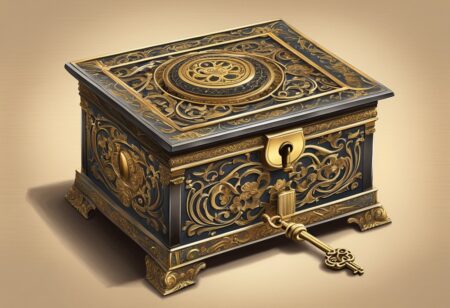A vintage music box is a mechanical device traditionally designed to play a piece of music by using a set of pins placed on a revolving cylinder or disc to pluck the tuned teeth of a steel comb. These intricately crafted items are not only collectors’ pieces but also hold a certain nostalgia, evoking the elegance and charm of the eras they represent. Originating in the 18th century, music boxes have varied in size from tiny trinkets to large furniture-like pieces, often embellished with ornate details and constructed from fine woods and metals.
The appeal of vintage music boxes lies in both their aesthetic and auditory qualities. The sound of a music box is distinctive, characterized by its delicate, tinkling melody that can transport one back in time. Collectors and enthusiasts appreciate these items for their historical value, their craftsmanship, and the technology that predates the modern era of recorded music.
The evolution of music boxes has seen them transition from high-end luxury items to more accessible keepsakes. Despite the advent of new technologies that have transformed the way people listen to music, vintage music boxes remain prized for their beauty and the mechanical ingenuity that they represent. Their longevity as a form of entertainment and art is a testimony to the human desire to blend creativity with technological prowess.
History of Vintage Music Boxes
Music boxes, with their distinct melodic tones, have a rich history stretching back to the 19th century. They first emerged in Switzerland, where craftsmen pioneered the intricate technology that enabled small machines to produce music by plucking a steel comb with a rotating cylinder studded with pins.
Interest in these objects quickly spread across Europe, with Germany becoming a significant contributor to their development. Antique music boxes, still highly sought after today, often hail from these regions and showcase the exceptional skill of their creators.
In America, the fascination with these melodious devices took hold later in the 19th century. They were not only a source of entertainment but also became treasured as ornamental keepsakes. The term ‘vintage’ typically refers to music boxes that are at least 20 to 99 years old, while ‘antique’ would denote an age of 100 years or more.
The evolution of music boxes saw several improvements, notably the transition from cylinder to disc music boxes, allowing for easier production and the ability to interchange music pieces. The golden age of music boxes is considered to have been between 1890 and 1910, after which the rise of phonographs began to eclipse their popularity.
Despite this, vintage music boxes remain coveted by collectors and enthusiasts who appreciate their history, craftsmanship, and the timeless charm they encapsulate. These mechanical treasures serve as a window into the past, bringing the sophistication and culture of bygone eras into the present.
Identifying Vintage Music Boxes

When assessing vintage music boxes, one must consider both the materials they are composed of and the intricacies of their mechanical features. These two aspects often reveal not only the age but also the value and authenticity of antique music boxes.
Materials and Craftsmanship
Vintage music boxes are often differentiated by their materials and the quality of craftsmanship. Collectors typically search for pieces made of:
- Wood: Common species include walnut, mahogany, and rosewood, each prized for their durability and their rich, natural finish.
- Bells and Chimes: Some music boxes incorporate metal components such as bells and chimes, which should produce a clear and resonant sound characteristic of their era.
- Crystal: High-end examples may feature crystal which was painstakingly cut and incorporated for its aesthetic qualities.
- Handmade Details: Look for signs of handmade craftsmanship, such as intricate inlay work or hand-painted details, which often add to a piece’s uniqueness and value.
The presence of these materials and the care taken in their crafting can be indicative of a music box’s category within a collection and help to confirm its provenance.
Mechanical Features
The mechanical features of a music box are key to its identification:
- Musical Mechanisms:
- Teeth: The comb’s teeth, often made of metal, should be intact and show signs consistent with constructive aging rather than damage.
- Musical Mechanisms: Identify the tune the box plays, as this can sometimes be traced back to specific manufacturers or periods.
- Automatons: Some high-value antique music boxes feature automatons — figures or scenes that move as the music plays. The fluidity and complexity of motion can indicate quality.
The mechanical features not only provide a category for identification but can also be used as search keywords for those looking to expand their collection or understand a piece’s heritage better.
Collecting Vintage Music Boxes
Collecting vintage music boxes is an endeavor appreciating both musical and historical significance. A collector should focus on understanding valuation, appraisal, and the diverse options available.
Starting a Collection
Individuals interested in vintage music boxes often seek pieces that resonate with historical value and workmanship. It’s important to research extensively to identify authentic music boxes, as this informs a collection’s legitimacy and value. A keen collector will start by acquiring knowledge about different styles, periods, and makers. Exploration and familiarity with **music box** mechanisms, decorations, and songs are vital.
Commencing a collection can be strategized through the following steps:
- Identifying Interests: Determine the era or type of music boxes that pique your interest.
- Budgeting: Decide on a budget to avoid overspending.
- Acquiring Pieces: Begin with less expensive models and gradually invest in rarer vintage treasures.
- Networking: Join online forums and local antiques clubs to connect with fellow collectors and sellers.
Valuation and Appraisal
The value of a vintage music box is contingent on factors such as condition, rarity, age, and demand. Appraisal of a music box should be done by professionals who can provide accurate assessments. Collectors aiming to sell their music boxes must have proof of valuation to establish trust with potential buyers.
Here is a simplified table to help understand the basics of valuation:
| Factor | Description | Impact on Value |
|---|---|---|
| Age | Older pieces tend to be more valuable if they’ve been preserved well. | Increases value |
| Condition | Music boxes in working order with minimal restoration command higher prices. | Key determinant of value |
| Rarity | Limited edition pieces or those from prominent makers are highly sought after. | Significantly boosts value |
| Market Demand | High demand can lead to higher prices, affected by trends and collector interest. | Fluctuates values |
Effective valuation of a music box also includes a review of comparable sales and current market trends. Collecting vintage music boxes, therefore, requires regular monitoring of auctions and sales to stay informed on current value benchmarks.
Buying and Selling Vintage Music Boxes
In the niche market of vintage music boxes, sellers and buyers converge on both global and local platforms to exchange these special goods. With specific online marketplaces and the dedicated efforts of small businesses and individual artisans, the market thrives on the availability of a diverse range of music boxes, from mass-produced antiques to unique, made-to-order items.
Online Marketplaces
eBay and Etsy stand as two global marketplaces that facilitate the buying and selling of vintage music boxes. Sellers can create a listing page on eBay, offering detailed descriptions and photos of their items for potential buyers to peruse. Communication is key; eBay allows potential buyers to contact sellers directly with any questions or to request additional information through messages.
- Listing on eBay:
- Create a seller account
- Upload clear, high-resolution images
- Write a detailed description
- Set your price or opt for auction-style selling
- Respond promptly to buyer inquiries
Etsy caters to a community valuing handmade and vintage items, representing a hub for creative entrepreneurs and those seeking special goods, such as vintage music boxes. On Etsy, shops add a personal touch, with many offering the option to add your personalization to items or creating one-of-a-kind, made-to-order pieces.
- Setting up a Shop on Etsy:
- Register for an Etsy account and open your shop.
- Draft enticing product descriptions emphasizing the unique qualities of your music boxes.
- Optimize listings with keywords for better visibility.
- Engage with your customers and offer customized services when applicable.
The Role of Small Businesses and Artisans
Small businesses and artisans are the backbone of the vintage music box industry. They present a world of specialized services, restoring and crafting pieces that carry a touch of history. Physical shops grant buyers the chance to see and hear the music boxes themselves, which can greatly influence purchasing decisions.
- For Buyers:
- Visit local antique shops and craft fairs for a hands-on experience.
- Inquire about the history of the music box and any restoration work completed.
- Support small businesses by recommending their shops to fellow vintage enthusiasts.
- For Sellers:
- Network with local businesses to gain exposure for your products.
- Establish a strong rapport with customers through exceptional service.
- Offer repair or customization services if within your expertise.
By harnessing the power of both online marketplaces and the irreplaceable human touch of small businesses and craftsmen, the market for vintage music boxes is both vibrant and accessible.
Caring for Vintage Music Boxes
When handling vintage music boxes, gentle care is a must to preserve their delicate mechanisms and intricate details. Owners should exercise caution to avoid damaging these antique treasures.
Routine Maintenance
- Dust Regularly: Use a soft brush or a lint-free cloth to gently remove dust from the music box. Avoid using liquid cleaners which can seep into the mechanism.
- Lubrication: The internal mechanism should be lightly lubricated with a clock oil every few years by a professional to ensure smooth operation.
Cleaning
- Interior: It’s crucial not to disturb the internal components. If cleaning is necessary, consult a professional.
- Exterior: A dry or slightly damp cloth can be used for the outside. For metal parts, use a proper metal cleaner applicable to the specific type of metal.
Storage:
- Environment: Store music boxes in a controlled environment, away from extreme temperatures and humidity to prevent warping and rust.
- Positioning: Keep them in an upright position to avoid stress on the mechanism. Ensure they are on a stable surface where they won’t be knocked over.
Handling with Care
- When moving the music box, do so with both hands and hold the base to avoid dropping it.
- Wind the mechanism with a steady, but not forceful touch.
- Open and close the lid gently to avoid abrupt movements that could damage the hinge or the musical mechanism.
Adhering to these guidelines will help maintain the beauty and functionality of vintage music boxes for years to come.
Different Types of Vintage Music Boxes
Vintage music boxes are varied in design and function, often reflecting the era of their creation and the technological advancements of the time. These collectible items are not only categorized by their outward appearance but also by the distinct melodies they produce and the mechanisms that drive them.
Musical Carousels
Musical carousels represent a whimsical category of vintage music boxes. Typically, they are embellished with figures, such as horses and chariots, that revolve to a melody as the music plays. The melodies associated with these pieces are often classic tunes from the late 19th to early 20th century, reminiscent of actual carousel music. These music boxes were and still are popular gifts for children and collectors alike. Musical instruments replicated in these devices range in complexity, with some featuring intricate pipe organ sounds.
Snuff Boxes with Musical Mechanisms
Snuff boxes with musical mechanisms are a unique and sophisticated subset of vintage music boxes. Originally designed as containers for powdered tobacco, these snuff boxes were considered luxurious items and were often gifted to convey status and appreciation. In the 18th and 19th centuries, adding a musical element to these boxes was a natural progression, combining utility with entertainment. They showcase a variety of melodies, often personalized for the recipient. The musical instrument component within these boxes is a miniaturized mechanism, finely crafted to fit within the compact space of the snuff container while still producing clear and precise notes.
Integrating Vintage Music Boxes into Modern Life
Vintage music boxes offer a unique blend of historical charm and melodious nostalgia. They provide a distinctive character to modern settings, whether through decoration or as thoughtful personalized gifts.
Home Decor
Introducing a vintage music box to a contemporary space can serve as a focal point, giving the room a touch of elegance and historical depth. Consider the following ideas to place vintage music boxes:
- Tabletop Displays: Position on coffee tables, bookshelves, or mantelpieces. Pair with complementary antique items like vintage books or old photographs to create a cohesive vignette.
- Functional Aesthetics: Use them as sophisticated alternatives to everyday items, such as a jewelry holder on a dresser or a unique conversation piece in a guest room.
- Thematic Accentuation: Incorporate music boxes into themed decor, such as a Victorian-inspired room or a music corner filled with instruments and records.
Gifting Vintage Music Boxes
When chosen thoughtfully, a vintage music box becomes more than a gift; it transforms into a heritage item, imbued with personal significance.
- Personalization: Engraving a message or including a favorite tune can tailor a gift to the recipient’s tastes. Look for services that modify antique music boxes to include modern songs.
- Occasions: Consider the event when selecting a music box. For a wedding, choose a piece that plays a romantic fixture. Birthdays and anniversaries can be marked with tunes that carry personal resonance.
- Collector’s Delight: Vintage music boxes can be an excellent choice for individuals who appreciate vintage treasures. Select a unique or rare piece to add value to their collection.
User Interaction with Vintage Music Boxes Online
Engaging with vintage music boxes online provides enthusiasts with various tools and features to enhance their purchasing or selling experience. Users can manage their interests and track auction dynamics effectively through online platforms.
User Accounts and Watchlists
Once users create an account, they gain access to personalized experiences. Each user can:
- Save searches for specific vintage music boxes.
- Add favorite items to their watchlist.
- Receive messages from sellers or other collectors.
- Save sellers they trust for future purchases.
Recently viewed items are logged, allowing users to revisit them at their leisure. User information is stored securely, with the option for users to update details and view their purchase history. This history is instrumental if users want to buy again, streamlining the repurchase process for items of interest.
Auctions and Bids
Auctions offer a dynamic way to acquire vintage music boxes. Users can:
- Place bids on items of interest.
- Receive notifications for daily deals.
- Track bids and offers through their bids/offers section.
These features help maintain a competitive yet organized bidding environment. Users are expected to comply with the terms of the auction, encouraging fair play among bidders.
Frequently Asked Questions
This section addresses common inquiries regarding the identification, valuation, preservation, and acquisition of vintage music boxes.
How can one determine the age of a vintage music box?
The age of a vintage music box can be assessed by examining its mechanism, materials, and craftsmanship. Manufacturer’s marks, patents, or serial numbers found on the piece can also provide clues to its era of creation.
What factors contribute to the value of a vintage music box?
Factors that contribute to a music box’s value include its condition, rarity, brand, quality of craftsmanship, age, and historical significance. Additionally, the complexity of the musical mechanism and the appeal of the melodies played are important.
What are some of the most sought-after vintage music box brands or models?
Brands like Reuge, Thorens, and Polyphon are highly prized among collectors. Specific models, such as the Symphonion, Regina, and Mira, are sought-after for their historical value and intricate engineering.
How should one maintain and care for a vintage music box to preserve its condition?
Maintenance of a vintage music box involves gentle cleaning, avoiding overwinding, regular servicing by a professional, and keeping the music box in a controlled environment away from extreme temperatures and humidity.
What are the characteristics that distinguish an antique music box from more modern ones?
Antique music boxes are typically handcrafted with natural materials, possess complex mechanical movements, and may feature hand-painted details. Modern ones are often mass-produced with electronic components.
Where is the best place to purchase or sell vintage music boxes?
The best places for transactions are reputable antique shops, auctions, online marketplaces specializing in antiques, and collectors’ fairs. It is crucial to verify the authenticity and condition of the music box before any purchase or sale.




